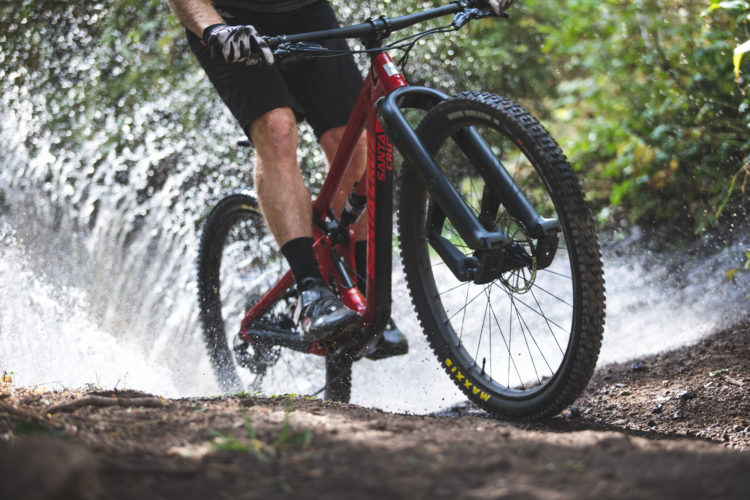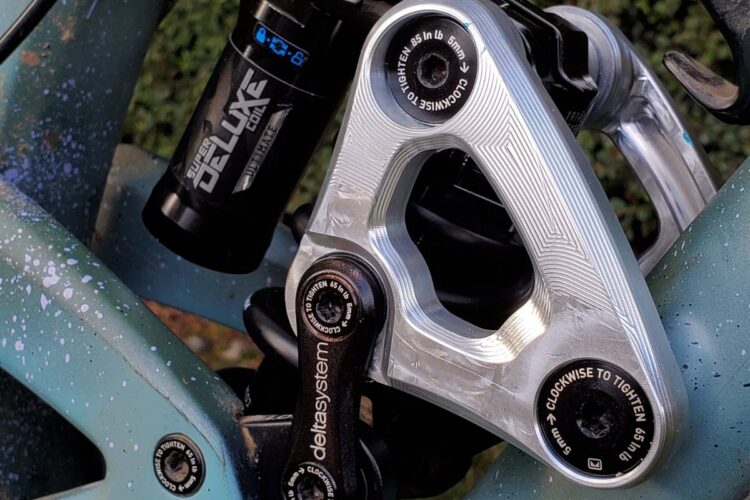
Knolly Bikes is suing Intense Cycles, claiming that the brand infringed upon their patent, according to Bicycle Retailer and Industry News.
Knolly’s suit claims that Intense infringes on their patent with six of its models, and that Intense “examined Knolly’s bikes that use the patent.” The bikes involved include the Tracer, the Carbine, the Tazer, the Primer 29, Primer S, and Primer 27.5.

The patent, US 10,363, 988, was filed in 2014 and granted in 2019 for “rear suspension systems for bicycles.” The patent describes a suspension linkage and frame design that has an angled seat tube which meets the downtube above and in front of the bottom bracket. The patent also describes a suspension system with four inches or more of travel with optimal traction, pedaling efficiency, and rear brake interaction, with the seat post inserted at least four inches into the seat tube.
Knolly calls their multi-link suspension platform, used since their inception, the Fourby4 Linkage system, developed by CEO and chief designer Noel Buckley. A quote on the Knolly website attributed to Buckley says “The dream was to build a bike that simply worked reliably day in and day out, without any annoyances like interrupted seat tubes, tires hitting the seat, or seat tube or shocks tucked away in difficult to access locations.”

Intense long used the VPP (virtual pivot point) multi-link suspension, but has been implementing the JS Tuned suspension system, named after founder and CEO Jeff Steber, which uses two counter-rotating links connecting the front and rear triangle, which allow the separation of pedaling and braking forces from the suspension. This is a common goal with most mountain bike suspension systems. Every Intense model now uses its own JS Tune.
The Primers noted in the lawsuit and the Tazer have straight seat tubes all the way through, but the Carbine does not. The Intense JS suspension is a very different design than the Fourby4 linkage, so the lawsuit seems to be aimed at the characteristics of the suspension and how it is placed with the seat tube and bottom bracket. Straight seat tubes are more common these days as well, with engineers going for designs that allow a low standover height combined with the ability to fit a dropper post as low as possible in the seat tube.




















0 Comments